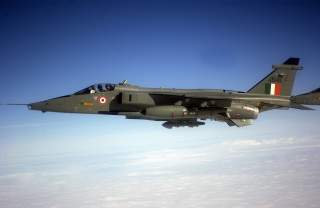The Recent Declassification of India's Secret 'Long Telegram' Shows Why It Went Nuclear
The nuclear specter of China has always been India's overwhelming consideration.
There was also an argument at the time that India should go in for a tactical weapon arsenal instead of strategic systems. As the PMO documents reveal, this was considered head on by the Department of Atomic Energy. The Indian atomic establishment argued that if China were to meet determined resistance from our ground forces while crossing the Himalayas, she could make use of tactical nuclear weapons and demoralize our troops. It concluded that the argument that India could impact the military situation by possessing only tactical weapons was a fallacy and that India needed to focus on developing strategic delivery capability rather than settling for a small tactical arsenal.
If China is using a nuclear weapon to bully or to annihilate our forces, we can expect China to escalate the conflict if the limited use is successfully countered by us. China is known to be developing a strategic nuclear weapon system involving long range guided missiles. Therefore, the only way by which we could deter Chinese escalation would be to ourselves have a strategic system capable of inflicting an unacceptable damage on China. (PMO File Manufacture of Atomic Bomb File No. 56/69/70-Parl; PMO (Prime Minister Office), NAI; New Delhi, India)
The only way to stop China from escalating was to have second-strike capability inflicting unacceptable damage. According to the Department of Atomic Energy, “paper tigers do not provide security, that is, you cannot bluff in regard to your military strength.” India would require a total defensive system rather than a prototype by a scientist. However, since Indian cities were within range of China’s intermediate missile arsenal, India would require longer ranges missile to bring Chinese cities within their striking capacity. The completion of the reprocessing facility at Tarapur, which had begun in 1968, was a pointer in the direction the prime minister’s office was thinking.
In conclusion, it would be a mistake to ascribe the wisdom of Indian nuclear doctrine and strategy merely to those who came in at the weaponization operationalization stage. The archival history establishes that doctrinal inquiries went back to the mid-1960s. China was and remains the main nuclear threat for India. Indian nuclear doctrine considers China to be its main nuclear rival. Former National Security Advisor Shiv Shankar Menon told the author that since Pakistani delivery platforms are essentially based on Chinese systems, it made them an extension of the Chinese nuclear threat.
Vivek Prahladan is a visiting researcher at Keio University in Japan.
Image: An Indian Air Force Jaguar GR-1 Shamser (Sword of Justice) ground attack aircraft. Wikimedia Commons/U.S. Air Force

